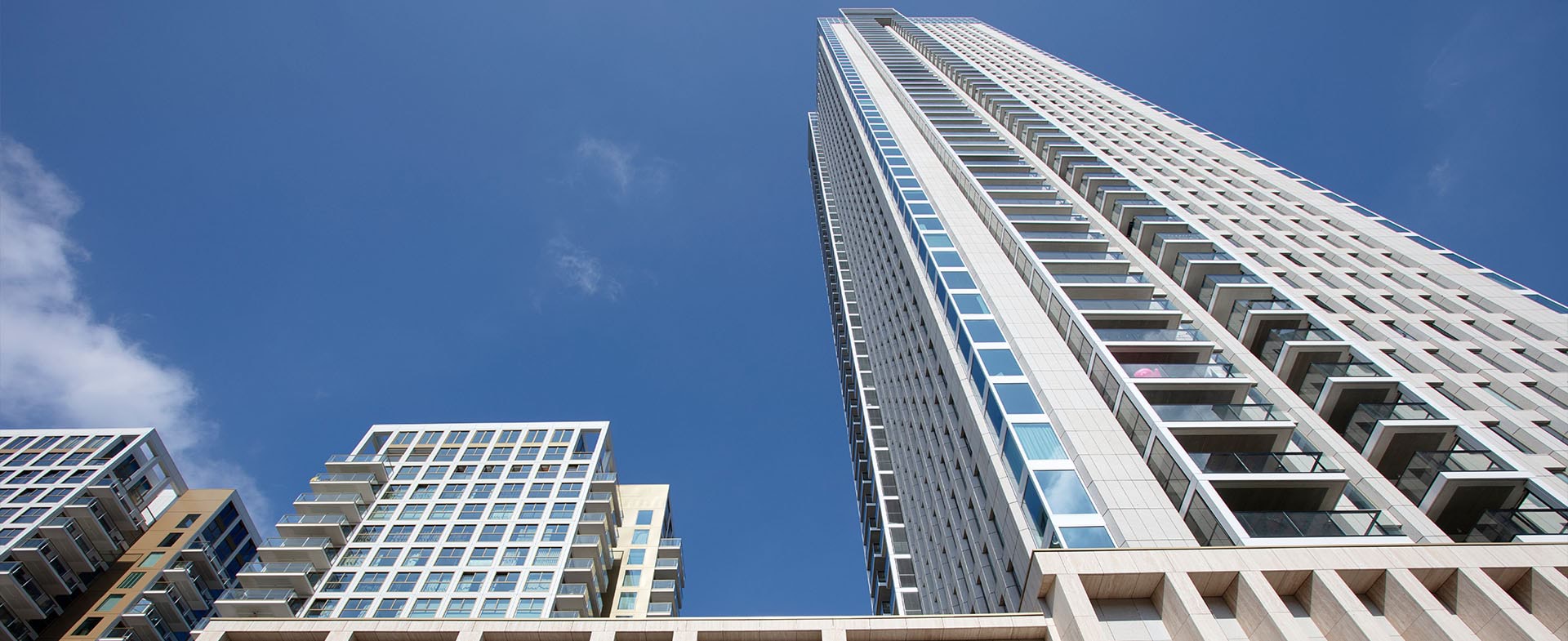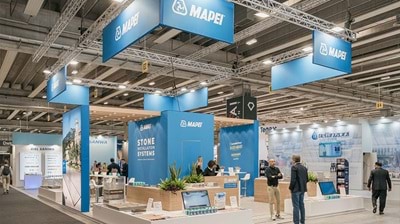

Interviews
/
11/6/2023
The charm of stone adds prestige to embassies and hotels
Mieke Dobbelsteen – de Mol, Contract & Project Manager for Senta, highlighs the contribution of Mapei products in overcoming the challenges of working with stone in large-scale projects
Mieke Dobbelsteen – de Mol, Contract & Project Manager for Senta, highlights the contribution of Mapei products in overcoming the challenges of working with stone
Why is a Dutch contractor like SENTA coming to Verona to visit Marmomac? Is this because Italian stone is particularly appealing and widely used in the Netherlands?
Senta International is a renowned natural stone company that has been working on international construction projects, for which the installation of natural stone plays a significant role. So, first of all, we come to Marmormarc because it is an international trade fair and here we can meet both Italian manufacturers of marble and granite and the entire “world” of natural stone.
Nevertheless, Italian marble is definitely very popular in the Netherlands. When you look at the oldest houses in Amsterdam, even those dating back 100 or 150 years, you can see that Italian white marble was already there. As I said, we regularly include stone materials, such as Italian marble, in our projects. For instance, in 2012-2013 we managed a project in the middle of Amsterdam that also included a famous, five-star hotel. We installed Arabescato marble from Italy in 85 bathrooms. We managed to ensure perfect, safe and durable installation of the marble floor and wall coverings by using Mapei waterproofing solutions and adhesives. In the Netherlands you can find numerous 4 or 5 star hotels with Italian marble and stone floor and wall coverings, while this is not as common in less prestigious hotels.
“We managed to ensure safe and durable installation of Arabescato marble coverings in a five star hotel in Amsterdam by using Mapei waterproofing solutions and adhesives”

Mapei waterproofing and stone installations systems were used to ensure durable bonding of Arabescato marble in 85 bathrooms
Which kind of characteristics do you look for when you choose stone materials?
Since we are a contractor, a project company, we usually let the architect take the lead. The architect usually already has something in mind and follows his inspiration. Sometimes he has already chosen the type of stone to use, while in other cases he gives some indications (a rough finish, some veins, etc.) and we have to find the right type of stone. So, the first step is always to find out what the architect has in mind and, in such cases, we propose several options. Secondly, we need to consider which type of stone is most suitable to that specific kind of application. For instance, our projects might also include installation on façades or in interiors. We need to know all the details of the project (climatic conditions, area of use, exposure to light and water, frequency of cleaning operations) to find out which type of stone best suits each specific case and be able to satisfy the architect’s requests, while also solving any problems that arise on site and satisfying the technical requirements.
This is why we especially appreciate Mapei’s contribution: they can offer competent, ongoing technical assistance and help carry out tests to find out the best adhesive systems for different types of stone.

Mapei products were also used to complete the Zalmhaven tower, the tallest tower in Rotterdam
How important is sustainability for you? How do you put your commitment into practice?
Sometimes we would like to do more. I notice that when an architect is allowed to work with stone, he might be tempted to choose some “exotic” types of stone, perhaps coming from India or Brazil, rather than choosing European marble and stone. For instance, we were once involved in a project where the prescribed stone material was granite from India. We tried to persuade the architect to consider some alternative types from Europe, to “cut down” on energy and pollution from transport. What is more, in Europe the stone cutting process increasingly involves adopting sustainable measures such as recycling water, using solar energy, etc. In that specific case we were unsuccessful: for us as a subcontractor it's not always easy to have that much influence on the choice of materials but we always try to propose stone materials from Europe rather than from more distant countries.
In the Netherlands environmental awareness is growing but price is still quite important as a decisive factor, along with a certain familiarity with “traditional” materials, the ones architects and contractors are already used to working with and are used to seeing in many different environments.
Senta has been involved in lots of projects for various embassy buildings. Is this due to the way stone can enhance the symbolic and representative appearance of a building? What are the challenges you face when working for this kind of client?
Sure, I think it is just like that: stone provides projects with a certain “status”. Many embassies use travertine or other precious types of stone on walls and floors, probably to “impress” embassy visitors and give the institution some kind of added importance or prestige. It's rare to find a project for an Embassy or Consulate that does not include the use of stone. For instance, with US embassies, a standard design is specified by US authorities that always includes stone.
In these projects, too, we receive a lot of help from Mapei because it is a global company. For instance, when we were dealing with projects for Embassies outside the Netherlands, we are able to buy directly from Mapei headquarters in Italy or from other countries where a subsidiary of Mapei Group is located.
“It's rare to find a project for an Embassy or Consulate that does not include the use of stone, probably to “impress” visitors and add prestige. In the projects involving embassies, we usually receive a lot of help from Mapei thanks to its global presence”

Senta is often involved in building projects for US Embassies all over the world: in the case of the US Embassy in Youndé, Cameroon, Mapei products were used to install stone
Beside their global availability, how do Mapei products and technical services help you to achieve or contribute to your project?
Apart from its global presence, we also choose Mapei products because they able to ensure very high performance and durability, and also because Mapei’s support allows us to work on different projects at the same time.
Mapei Technical Services provides us with very competent, flexible staff that can help us while working on different sites. For instance, we are now working on a huge project in Amsterdam North with international contractors to build a 100 m tower hosting a top-level hotel. We are working on stone installation on floors and walls in the lobbies for a total of 8000 m2. I asked Mapei Netherlands to come and help us on site several times, to instruct us on how to use your products and to help draft reports. Training is also a very important service Mapei is able to provide and which we appreciate a lot.
In addition, Mapei products often help us meet standards applied in different countries. For example, when working on the construction of US Embassies, we benefitted from Mapei products being compliant with US standards, a requirement of the specifications.
SENTA INTERNATIONAL
Senta International is a renowned natural stone company that has been working with leading architects and developers on the realization of (inter)national construction projects, for which the installation of natural stone plays a significant role. From their homebase in the Netherlands, they have become a contributor to award-winning buildings, continuously dedicating ourselves to remaining inventive, creative and exclusive in the use of nature's most sustainable material to built with. Their projects also include many tall buildings (hotels, offices, residential complexes) and many Embassies all over the world. Find out more here.






